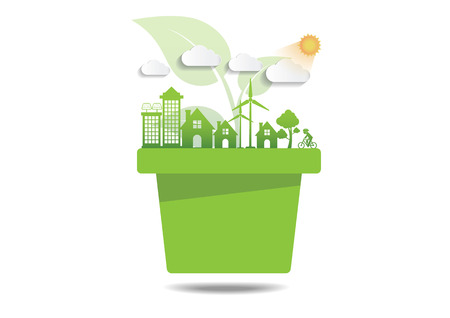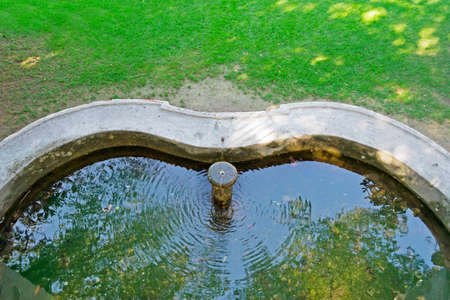Understanding Your Ponds Water Needs
Maintaining the right water level in your garden pond is essential for the health of aquatic plants and wildlife, but it can be a challenge given the UKs unpredictable weather. British ponds face a unique set of factors that affect water evaporation and loss throughout the year. Seasonal variations play a significant role: during warm summer spells, increased temperatures and longer daylight hours can accelerate evaporation rates, sometimes leaving your pond noticeably lower within just a few days. Conversely, during colder months, rainfall may top up your pond naturally, but harsh winds or unexpected dry spells can still cause gradual water loss.
Local weather patterns also influence how much water your pond retains. In some regions, heavy rainfall might lead to overflow, while in others, prolonged periods of drought can quickly deplete water levels. Moreover, exposure to direct sunlight and limited shade increases evaporation further—a common issue in many British gardens. Understanding these influencing factors is key to developing sustainable strategies for topping up and managing your pond’s water level effectively, ensuring you support local biodiversity without relying excessively on mains water.
Rainwater Harvesting for Your Pond
Collecting rainwater is one of the most sustainable ways to maintain your pond’s water levels, especially with the UK’s famously unpredictable weather. Rather than relying on mains water—which can be treated with chemicals and is subject to hosepipe bans—rainwater harvesting makes use of a natural, soft water source that’s ideal for pond ecosystems.
Practical Methods for Rainwater Collection
The simplest approach to rainwater collection involves fitting water butts to your gutter downpipes. Most UK homes are well-suited to this method, thanks to pitched roofs and established drainage systems. Water butts come in various capacities and materials; choosing one depends on your available space and garden layout.
| Water Butt Type | Capacity (Litres) | Best For |
|---|---|---|
| Standard Plastic Butt | 100-250L | Small gardens/allotments |
| Slimline/Column Butt | 150-300L | Narrow spaces/balconies |
| Large Barrel or Tank | 500L+ | Large gardens/ponds |
Integrating Rainwater with Your Pond System
To ensure the harvested rainwater supports pond health, it’s important to consider filtration before adding it to your pond. Leaves, debris, and bird droppings from roofs can contaminate stored water. Installing a simple mesh filter on your downpipe or at the inlet of your water butt helps trap larger particles. For additional protection, you can use a fine pre-filter inside the butt or connect an inline filter when transferring water into the pond.
Tips for Optimal Water Quality
- First Flush Diverter: Fit a diverter to discard the initial run-off after dry spells, as this often contains more contaminants.
- Avoid Chemical Roof Treatments: If possible, avoid using chemical moss killers or roof cleaners that may leach into collected water.
- Regular Cleaning: Empty and clean your water butt annually to remove sediment build-up.
- Cover Your Butt: Keep lids secure to prevent algae growth and deter wildlife from falling in.
A Note on Volume Planning
The UK receives variable rainfall, so having multiple smaller butts connected in series can help maximise storage without taking up too much space. This modular approach also lets you spread collection across different parts of your property, ensuring reliable supply through dry periods.

3. Greywater Reuse: Opportunities and Cautions
With the UK experiencing more frequent dry spells and unpredictable rainfall, many gardeners are considering alternative water sources for their ponds. One method gaining traction is the reuse of household greywater—the relatively clean wastewater from baths, sinks, showers, and washing machines. This approach has clear sustainability benefits, reducing mains water demand and making use of resources that would otherwise go down the drain. However, before adopting greywater for topping up your pond, it’s essential to examine both its suitability and safety considerations specific to British gardens.
What Makes Greywater Suitable—or Not?
Greywater can be a practical solution for maintaining pond levels during dry periods, but its composition varies depending on the source. Water from baths and showers is generally less contaminated than that from kitchen sinks or washing machines, which may contain food particles, grease, or strong detergents. For garden ponds—particularly those supporting fish or sensitive wildlife—minimising chemical residues is paramount. In most British households, choosing greywater that is free from harsh cleaning agents and soaps with minimal additives is best practice.
Safety Considerations for British Gardeners
The primary concern when using greywater in UK ponds is the potential introduction of pollutants harmful to aquatic life or disruptive to pond ecosystems. Many commonly used household products contain phosphates, bleach, or antibacterial agents—all of which can cause algae blooms or harm wildlife. To mitigate these risks:
- Select eco-friendly products: Opt for biodegradable soaps and detergents labelled as safe for greywater reuse.
- Avoid kitchen greywater: Steer clear of water containing fats, oils, food waste, or strong chemicals.
- Pre-filter greywater: Use a simple sand or gravel filter to remove particulates before directing it to your pond.
- Monitor pond health: Regularly check water clarity, odour, and the well-being of plants and animals after introducing greywater.
Legal and Environmental Guidance
In the UK, there are currently no strict regulations prohibiting domestic greywater use in private gardens. However, local authorities recommend caution—especially if your pond drains into natural waterways where pollution could have wider impacts. Always ensure greywater does not run off into neighbouring properties or public drains without treatment. If in doubt, consult your local council or the Environment Agency for tailored advice.
In summary, while reusing greywater can offer sustainable relief during water shortages, British gardeners should weigh up the type of greywater available and follow robust safety practices to protect their pond ecosystems. Taking these steps will help maintain a healthy balance between resource efficiency and environmental stewardship.
4. Water-Saving Techniques Around the Pond
Sustainable pond management goes beyond simply topping up water; it also means adopting smart techniques to reduce unnecessary water loss. By integrating thoughtful landscaping and choosing the right plants, you can help your pond retain more water naturally, even during unpredictable British weather.
Mulching Pond Edges
Applying mulch around the margins of your pond is a simple yet effective way to reduce evaporation and maintain consistent moisture levels in the surrounding soil. Mulch acts as a barrier, keeping soil cool and reducing how quickly water escapes into the atmosphere. Choose natural materials such as wood chips, bark, or even well-rotted leaf mould for best results. This not only supports the local ecosystem but also integrates seamlessly with British garden aesthetics.
Planting Native Species
Native plants are well-adapted to local conditions and typically require less supplemental watering once established. Their deep root systems help stabilise pond banks and slow down runoff, which means more rainwater gets absorbed rather than lost. Consider the following native species suited to UK ponds:
| Plant Name | Benefits |
|---|---|
| Marsh Marigold (Caltha palustris) | Early flowering; attracts pollinators; stabilises edges |
| Water Mint (Mentha aquatica) | Aromatic foliage; good for wildlife; helps reduce erosion |
| Yellow Flag Iris (Iris pseudacorus) | Tough roots; excellent at filtering excess nutrients |
| Brooklime (Veronica beccabunga) | Creeping habit; covers bare soil to minimise evaporation |
Smart Landscaping Choices
The way you landscape around your pond can have a marked impact on how much water is lost through evaporation and runoff. Aim for gentle slopes leading towards the pond so that rainfall is directed inwards rather than away. Introduce swales or shallow ditches to capture rainwater from other areas of your garden and channel it towards the pond during wet spells. Additionally, avoid paving large areas around the pond, as hard surfaces increase runoff and reduce infiltration.
Key Strategies for Water Conservation:
- Use organic mulch around the perimeter to slow evaporation.
- Select drought-tolerant native plants that thrive without excessive watering.
- Design gentle gradients to direct rainwater into the pond basin.
- Create swales to make the most of occasional heavy rainfall typical in British summers.
- Avoid impermeable surfaces near the pond to encourage natural absorption.
Sustainable Results Over Time
By combining mulching, native planting, and clever landscaping, you’ll not only conserve water but also foster a resilient, wildlife-friendly environment that responds well to Britain’s changeable weather. These practical steps are key for any pond owner aiming for long-term sustainability.
5. Monitoring and Managing Pond Water Levels
Keeping a close eye on your pond’s water level is essential for long-term sustainability, particularly as British weather can be unpredictable—ranging from prolonged dry spells to sudden downpours. Regular monitoring helps you react promptly and maintain a balanced aquatic environment.
Essential Tools for Regular Checks
The simplest method is to use a marked stick or a purpose-made water level gauge placed discreetly at the pond’s edge. For those seeking more precision, electronic water level sensors are available and can send alerts to your smartphone if levels drop or rise unexpectedly. These tools allow you to track fluctuations easily, ensuring you’re always aware of your pond’s status.
Responding to Drought
During dry periods—a growing concern in many parts of the UK—ponds can lose water quickly through evaporation. To respond efficiently, it’s wise to have rainwater stored in butts ready for topping up. Avoid using mains tap water frequently, as it often contains chemicals that disrupt the pond’s delicate ecosystem. If tap water is unavoidable, let it stand in an open container for 24 hours before use to allow chlorine to dissipate. Mulching around the pond and planting drought-resistant marginal plants can also help reduce evaporation and retain moisture in the surrounding soil.
Coping with Heavy Rainfall
Conversely, heavy rainfall can cause ponds to overflow, potentially washing away beneficial organisms and nutrients. Installing an overflow outlet or spillway allows excess water to drain safely into a nearby soakaway or wildlife-friendly drainage area. Regularly clear debris from these outlets to prevent blockages. Planting dense vegetation around the pond acts as a buffer, slowing down surface runoff and reducing erosion risk.
Establishing a Monitoring Routine
To stay ahead of weather changes, make checking your pond’s water level part of your weekly garden routine. After storms or hot spells, increase the frequency of your checks. By combining manual observations with simple technology, you’ll foster a resilient pond that weathers Britain’s ever-changing climate while supporting local wildlife sustainably.
6. Community and Council Water Initiatives
For pond owners aiming to care for their water features sustainably, tapping into community and council resources can make a significant difference—both for individual gardens and the wider environment. Across the UK, local authorities and environmental organisations offer various support schemes and advice tailored to responsible water use and wildlife-friendly pond management.
Local Council Guidance
Many local councils provide guidance on water conservation and garden care that aligns with regional weather patterns. For example, some councils distribute rainwater harvesting kits or promote the use of water butts to reduce reliance on mains water. Checking your council’s website can reveal practical tips, seasonal updates, and even workshops on sustainable gardening practices.
Community Projects and Support Schemes
In several areas, community-led initiatives encourage shared learning about pond care and sustainable water management. Wildlife Trusts, for instance, often run local projects supporting pond creation and maintenance with biodiversity in mind. Additionally, groups such as The Royal Horticultural Society (RHS) offer advice lines, resources, and even grant funding for eco-friendly garden improvements.
Wildlife-Friendly Best Practices
Embracing council-recommended best practices—like using collected rainwater instead of tap water, choosing native plants, or creating buffer zones around ponds—helps protect local ecosystems. Many councils have specific recommendations for managing ponds during dry spells or heavy rainfall to prevent flooding and safeguard habitats for amphibians, insects, and birds.
Finding Local Information
If you’re unsure where to begin, start by searching your county or borough council’s environmental services page for relevant resources or events. Engaging with local gardening clubs or environmental volunteer groups can also provide hands-on experience and up-to-date advice specific to your area’s climate challenges.
By making use of these UK-specific resources and working collaboratively with your community, you can keep your pond thriving while supporting wider efforts towards sustainability and wildlife conservation.


